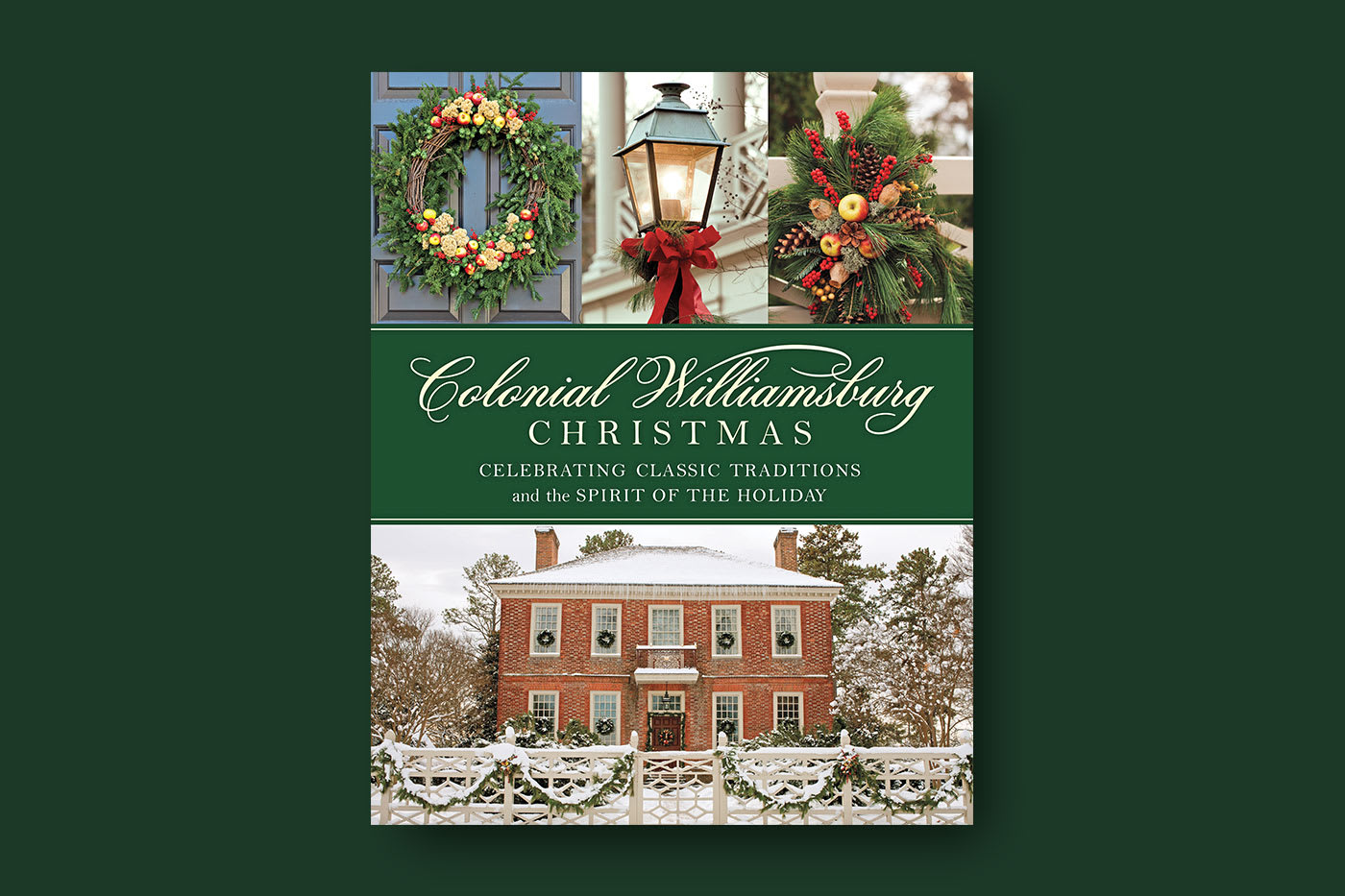
A tutor at a Virginia plantation, Philip Vickers Fithian, noted in his diary in December 1773, “Nothing is now to be heard of in conversation, but the Balls, the Fox-hunts, the fine entertainments, and the good fellowship, which are to be exhibited at the approaching CHRISTMAS.” The Christmas traditions of Williamsburg, then and now, are celebrated in Colonial Williamsburg Christmas.
The book is lavishly illustrated with nearly 200 color photos of fireworks lighting up the sky and cressets warming the town, of holiday balls at the Governor’s Palace and the firing of guns on Market Square, of seasonal foods and wreaths made of fresh fruits and other natural materials. (The 2.5 miles of pine roping used for decorations each year would stretch along Duke of Gloucester Street nearly three times.)
Here too are stories about how holiday traditions evolved. Williamsburg’s first Christmas tree, for example, was put up by a German immigrant to thank the family with which he was lodging. And the tradition of placing a single candle in each window of a house was introduced by a landscape architect from Boston. The book even includes recipes for syllabub and wassail, drinks popular in the 18th century and now the 21st. For, as Williamsburg’s St. George Tucker opened his 1784 poem Christmas Verses for the Printer’s Devil: “Now the season for mirth and good eating advances / Plays, oysters and sheldrakes, balls, mince pies and dances.”
Colonial Williamsburg Christmas is co-published by Globe Pequot and The Colonial Williamsburg Foundation.
To order this book, go to colonialwilliamsburg.org/books.
